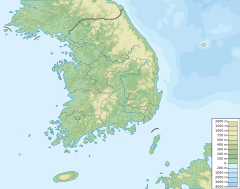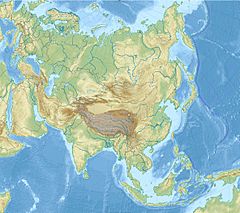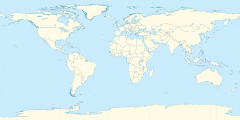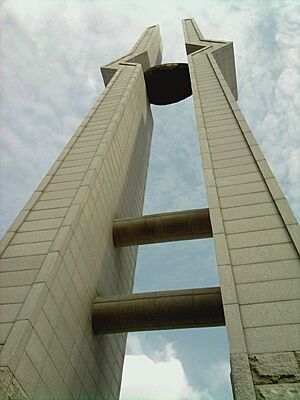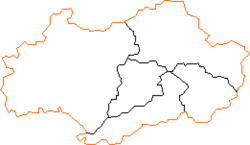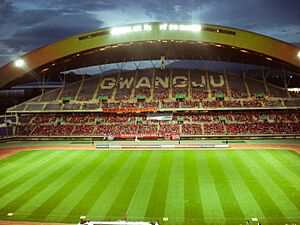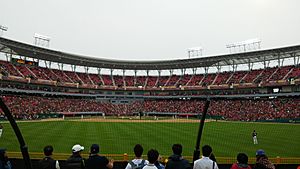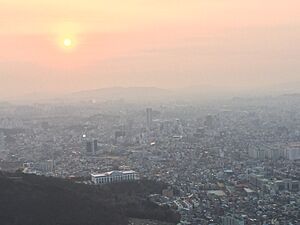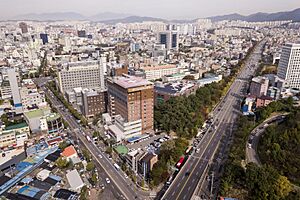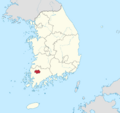Gwangju facts for kids
Quick facts for kids
Gwangju
광주광역시
|
|||
|---|---|---|---|
|
Metropolitan City
|
|||
| Gwangju Metropolitan City 광주광역시 |
|||
| transcription(s) | |||
| • Hangul | 광주광역시 | ||
| • Hanja | 光州廣域市 | ||
| • Revised Romanization | Gwangju-gwangyeoksi | ||
| • McCune-Reischauer | Kwangju-gwangyŏksi | ||
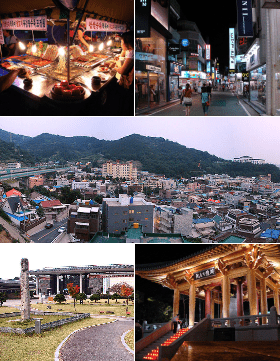
Above:Badhoe Pojangmacha Street Restaurant, Geumnamo Shopping district Middle:Panorama view of resident area of Gwangsan-gu Bottom:Gwangju Folk Museum, Democracy Bell in Denman Estate Park (All items are left to right)
|
|||
|
|||
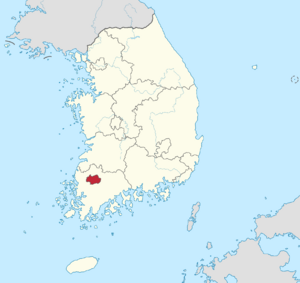 |
|||
| Country | |||
| Region | Honam | ||
| Districts | 5 | ||
| Government | |||
| • Type | Mayor–Council | ||
| Area | |||
| • Total | 501.24 km2 (193.53 sq mi) | ||
| Population
(November 2022)
|
|||
| • Total | 1,432,651 | ||
| • Density | 2,858.214/km2 (7,402.74/sq mi) | ||
| • Dialect | Jeolla | ||
| GDP | |||
| • Total | KR₩ 45 trillion US$ 36 billion (2022) |
||
| Time zone | UTC+9 (Korea Standard Time) | ||
| Area code(s) | +82-61 | ||
| ISO 3166 code | KR-29 | ||
| Flower | Royal Azalea | ||
| Tree | Ginkgo | ||
| Bird | Dove | ||
Gwangju is a large city in South Korea. It is the country's sixth-largest city. Gwangju is a "metropolitan city," which means it is directly controlled by the central government.
The city's name comes from two Korean words: gwang (Korean: 광; Hanja: 光), meaning "light," and ju (주; 州), meaning "province." So, Gwangju means "Light Province." It was once called Muju in ancient times. Gwangju is also famous for its delicious and varied food.
Contents
History of Gwangju
Gwangju was founded a very long time ago, in 57 BC. It was an important center for the Baekje kingdom during the Three Kingdoms period.
Gwangju Under Japanese Rule
During the time Japan ruled Korea, Gwangju was known as Kōshū. In 1929, a disagreement between Korean and Japanese students in the city grew into the Gwangju Student Independence Movement. This movement became a big protest across the country against Japan's harsh rule.
Modern Industry and Growth
Modern industries started to grow in Gwangju when a railway was built to Seoul. Factories for cotton textiles, rice mills, and breweries were set up. In 1967, a special industrial zone was created. This helped industries, especially those related to cars, grow even more.
The Gwangju Uprising of 1980
In May 1980, peaceful protests happened in Gwangju. People were protesting against the military leader Chun Doo-hwan. The military tried to stop these protests, which led to a lot of violence. This event is known as the Gwangju Uprising. Many civilians and some soldiers died during this time. After civilian rule returned in 1987, a national cemetery was built to honor the victims.
Gwangju Becomes a Metropolitan City
In 1986, Gwangju became a "Directly Governed City," separate from South Jeolla Province. Then, in 1995, it became a "Metropolitan City."
Gwangju's Political Views
Gwangju has a history of supporting left-leaning politicians. This is partly because of old rivalries between the Baekje and Silla regions. Also, political leaders in the late 20th century often favored the Gyeongsang region. Because of this, Gwangju is a strong base for the liberal Democratic Party of Korea.
Sports Events in Gwangju
Gwangju has hosted many big sports events. These include the 2002 FIFA World Cup, the 2015 Summer Universiade, and the 2019 World Aquatics Championships.
City Districts
Gwangju is divided into 5 main areas called "Gu" (districts).
| Map | Name | Korean | Hanja | |
|---|---|---|---|---|
| Districts | ||||
| Buk District | 북구 | 北區 | ||
| Dong District | 동구 | 東區 | ||
| Gwangsan District | 광산구 | 光山區 | ||
| Nam District | 남구 | 南區 | ||
| Seo District | 서구 | 西區 | ||
Population and People
Gwangju is home to a large number of people. In November 2022, its population was over 1.4 million.
| Year | Population |
|---|---|
| 1960 | 409,283 |
| 1966 | 532,235 |
| 1970 | 622,755 |
| 1975 | 737,283 |
| 1980 | 856,545 |
| 1985 | 1,042,508 |
| 1990 | 1,139,003 |
| 1995 | 1,257,636 |
| 2000 | 1,352,797 |
| 2005 | 1,417,716 |
| 2010 | 1,475,745 |
| 2016 | 1,500,621 |
Gwangju also has one of the largest communities of Koryo-saram in South Korea. These are ethnic Koreans who used to live in the Soviet Union. Schools near their village often have many students who speak Russian.
Climate and Weather
Gwangju has four clear seasons. It has a humid subtropical climate, which means it gets rain all year. However, it rains much more during the summer monsoon season.
Winters in Gwangju are cooler but milder than in Seoul. This is because Gwangju is located further south in Korea. Summers are hot and humid, with lots of rain and thunderstorms. Gwangju is one of the warmest cities in Korea during the summer.
| Climate data for Gwangju (1991–2020 normals, extremes 1939–present) | |||||||||||||
|---|---|---|---|---|---|---|---|---|---|---|---|---|---|
| Month | Jan | Feb | Mar | Apr | May | Jun | Jul | Aug | Sep | Oct | Nov | Dec | Year |
| Record high °C (°F) | 18.8 (65.8) |
22.6 (72.7) |
26.8 (80.2) |
30.4 (86.7) |
33.9 (93.0) |
37.2 (99.0) |
38.5 (101.3) |
38.5 (101.3) |
35.9 (96.6) |
31.1 (88.0) |
27.1 (80.8) |
19.9 (67.8) |
38.5 (101.3) |
| Mean daily maximum °C (°F) | 5.7 (42.3) |
8.3 (46.9) |
13.6 (56.5) |
19.9 (67.8) |
24.8 (76.6) |
27.9 (82.2) |
30.0 (86.0) |
30.9 (87.6) |
27.1 (80.8) |
21.9 (71.4) |
15.0 (59.0) |
8.0 (46.4) |
19.4 (66.9) |
| Daily mean °C (°F) | 1.0 (33.8) |
2.9 (37.2) |
7.5 (45.5) |
13.4 (56.1) |
18.7 (65.7) |
22.7 (72.9) |
25.9 (78.6) |
26.5 (79.7) |
22.2 (72.0) |
16.1 (61.0) |
9.6 (49.3) |
3.2 (37.8) |
14.1 (57.4) |
| Mean daily minimum °C (°F) | −2.7 (27.1) |
−1.5 (29.3) |
2.4 (36.3) |
7.8 (46.0) |
13.4 (56.1) |
18.7 (65.7) |
22.8 (73.0) |
23.2 (73.8) |
18.2 (64.8) |
11.2 (52.2) |
5.0 (41.0) |
−0.8 (30.6) |
9.8 (49.6) |
| Record low °C (°F) | −19.4 (−2.9) |
−17.7 (0.1) |
−10.7 (12.7) |
−4.5 (23.9) |
1.4 (34.5) |
7.2 (45.0) |
14.9 (58.8) |
12.6 (54.7) |
5.6 (42.1) |
−2.7 (27.1) |
−7.2 (19.0) |
−13.7 (7.3) |
−19.4 (−2.9) |
| Average precipitation mm (inches) | 32.6 (1.28) |
43.6 (1.72) |
61.9 (2.44) |
86.6 (3.41) |
91.4 (3.60) |
152.6 (6.01) |
294.2 (11.58) |
326.4 (12.85) |
145.0 (5.71) |
59.0 (2.32) |
50.2 (1.98) |
37.1 (1.46) |
1,380.6 (54.35) |
| Average precipitation days (≥ 0.1 mm) | 10.1 | 8.2 | 8.8 | 8.9 | 9.0 | 10.2 | 15.1 | 15.0 | 9.6 | 6.8 | 8.8 | 10.2 | 120.7 |
| Average snowy days | 9.9 | 6.3 | 2.4 | 0.3 | 0.0 | 0.0 | 0.0 | 0.0 | 0.0 | 0.0 | 1.1 | 8.4 | 28.4 |
| Average relative humidity (%) | 65.7 | 61.6 | 60.3 | 60.2 | 64.5 | 72.0 | 79.8 | 78.0 | 73.6 | 67.6 | 66.9 | 66.9 | 68.1 |
| Mean monthly sunshine hours | 161.4 | 170.5 | 201.0 | 214.1 | 227.9 | 169.9 | 143.1 | 169.0 | 174.4 | 208.5 | 167.4 | 156.9 | 2,164.1 |
| Percent possible sunshine | 51.1 | 53.4 | 51.8 | 54.3 | 51.3 | 39.0 | 32.9 | 41.4 | 46.3 | 58.5 | 52.7 | 51.1 | 48.0 |
| Average ultraviolet index | 2 | 2 | 3 | 4 | 5 | 5 | 7 | 6 | 5 | 3 | 3 | 2 | 4 |
| Source 1: Korea Meteorological Administration (percent sunshine 1981–2010) | |||||||||||||
| Source 2: Weather Atlas (UV) | |||||||||||||
Education in Gwangju
Gwangju has many schools and universities. There are public universities like Chonnam National University and Gwangju Institute of Science and Technology. There are also private universities such as Honam University and Chosun University.
In total, Gwangju has 593 schools. This includes kindergartens, elementary schools, middle schools, and high schools. There are also many colleges and universities. About 28.5% of the city's population are students.
Transportation
Gwangju has a good transportation system.
Gwangju Subway System
The city has its own Gwangju Subway system. An extension of the subway was finished in 2008.
Train Stations
There are two KTX (high-speed train) stations in Gwangju: Gwangju station and Gwangju Songjeong Station. Gwangju Songjeong Station is now the main one used. It connects to the subway and local buses.
Public Buses
Gwangju also has a large system of public buses. These buses travel all over the city. Bus stops and buses show information in both Korean and English. Local buses connect to the main intercity bus terminal, called U-Square.
Gwangju Airport
The city is also served by the Gwangju Airport.
Things to See and Do in Gwangju
Gwangju offers many interesting places to visit.
- Asia Culture Center (ACC) – This is a large center in downtown Gwangju. It celebrates the city's artistic and democratic history. It also hosts exhibits and events from artists around the world.
- Gwangju Biennale – This is a big modern art festival. It happens every two years and first started in 1995. You can find the exhibition hall at the Jung-oe Park Culture Center.
- Gwangju Culture & Art Center – This center regularly holds different events and shows.
- Gwangju Hyanggyo (Confucian School) – This old school is in Gwangju Park. It has traditional houses from the year 1392, during the Joseon dynasty. The school still holds ceremonies for Confucius twice a year.
- Gwangju National Museum – This museum has a collection of historical art and items. These items date back to the Joseon and Goryeo periods of Korean history. The museum also has special exhibitions and cultural activities.
- Gwangju 5.18 Road – This is a special route that visits historical places related to the Democracy Movement of 1980.
- May 18th National Cemetery – This cemetery honors the victims of the 1980 Gwangju Uprising.
- Food Streets – Gwangju is famous for its food. It has special "Food Streets" where you can find many restaurants serving local dishes. Some popular streets include Mudeungsan Boribap Street (barley meal), Duck Cook Street (duck stew), and Folk Tteokgalbi Street (grilled meat patties).
- Gwangju World Cup Stadium – This stadium is important for Korean soccer history. In the 2002 FIFA World Cup, the South Korea national football team beat Spain here. This win helped them reach the semi-finals for the first time in Asian soccer history.
Sports and Culture
Gwangju is a city with a lively sports and culture scene.
- Baseball – It is the home of the Kia Tigers baseball team. They play in the KBO league.
- Soccer – Gwangju is also home to Gwangju FC, a soccer team in the K League.
- Universiade – The city hosted the 2015 Summer Universiade games, a major international sports event for university athletes.
- Asia Song Festival – In 2006, the 3rd Asia Song Festival was held at the Gwangju World Cup Stadium. This festival brings together pop music artists from across Asia.
- International Design Alliance (IDA) Congress – Gwangju was chosen to host the 2015 IDA Congress, a big event for designers.
- FINA World Aquatics Championships – The city hosted the 2019 FINA World Aquatics Championships, a major swimming and water sports event.
- Gwangju ACE Fair – This is an annual event focusing on Asian content and entertainment.
- "Green-Startup-Town" – Gwangju was chosen to create a "Green-Startup-Town." This project aims to build a hub for new businesses and research near Gwangju Station.
- Volleyball – It is the home of the Gwangju AI Peppers volleyball team, which plays in the V-League.
Cityscape
- Mudeungsan – This is a mountain that is part of Mudeungsan National Park. It offers beautiful views and hiking trails.
International Connections
Gwangju has connections with cities around the world.
Sister Cities
Gwangju is "twinned" with these cities, meaning they have special friendly relationships:
Partnerships
Gwangju also has partnerships and cooperations with:
 Turin, Italy
Turin, Italy Seberang Perai, Malaysia (2013)
Seberang Perai, Malaysia (2013)
Famous People from Gwangju
Many talented people come from Gwangju, especially in entertainment and sports.
Entertainers
- Goo Hara (from K-pop group KARA)
- Jung Ho-seok (J-Hope) – member of K-pop group BTS
- Jeong Yun-ho (Yunho) - member of K-pop group ATEEZ
- Moon Geun-young – South Korean actress and singer
- Lee Seung-hyun (Seungri) – former member of K-pop group Big Bang
- Jung Yun-ho (U-Know) – member of K-pop group TVXQ
- Seo Hye-lin – member of K-pop group EXID
- Sim Jayoon (stage name YOON) – member of K-pop group STAYC
- Lee Gi-kwang – member of K-pop group Highlight
- Lee Sung-jong – member of K-pop group Infinite
- Chae Hyung-won – member of K-pop group Monsta X
- Im Chang-kyun (I.M.) – member of K-pop group Monsta X
- Bae Su-ji (Suzy) – former member of K-pop group Miss A
- Gong Min-ji (Minzy) – member of K-pop group 2NE1
- Kim Yu-bin – former member of K-pop group Wonder Girls
- Hong Jin-young – a trot singer
- Park Shin-hye – South Korean actress
- Jung Woo-seok – member of K-pop group Pentagon
- Lee Na-gyung – member of K-pop group Fromis 9
- Song Ha Young – member of K-pop group Fromis 9
- Seo Woobin – member of K-pop group Cravity
- Oh Seunghee - member of K-pop group CLC
- Lee Su-jeong (Babysoul)- leader and member of K-pop group Lovelyz
- Bae Seung-min - member of K-pop group Golden Child
- Park Soeun - member of K-pop group Weeekly
- Lee Taeyeob (Yoojung) - member of K-pop group OnlyOneOf
- Jang Seowon - member of K-pop group Lapillus
- Kim Yeunja (born 1959) - South Korean trot singer
- Joo Hyunmi (born 1961) - South Korean trot singer
- Jang Beomjoon (born 1989) - South Korean singer, former member of Busker Busker
- Lee Ha-joon (Hajoon) - member of Korean indie-rock band The Rose
Sports Stars
- Ki Sung-yueng – International football player.
- An San – Olympic gold medalist in archery at the 2021 Tokyo Summer Games.
- An Se-young - Badminton Player.
- Kim Byunghyun (born 1979) - South Korean former baseball player.
Images for kids
Religion in Gwangju (2015) Not religious (61%) Protestantism (20%) Buddhism (9.5%) Catholicism (8.7%) Other (0.8%)
See also
 In Spanish: Gwangju para niños
In Spanish: Gwangju para niños




